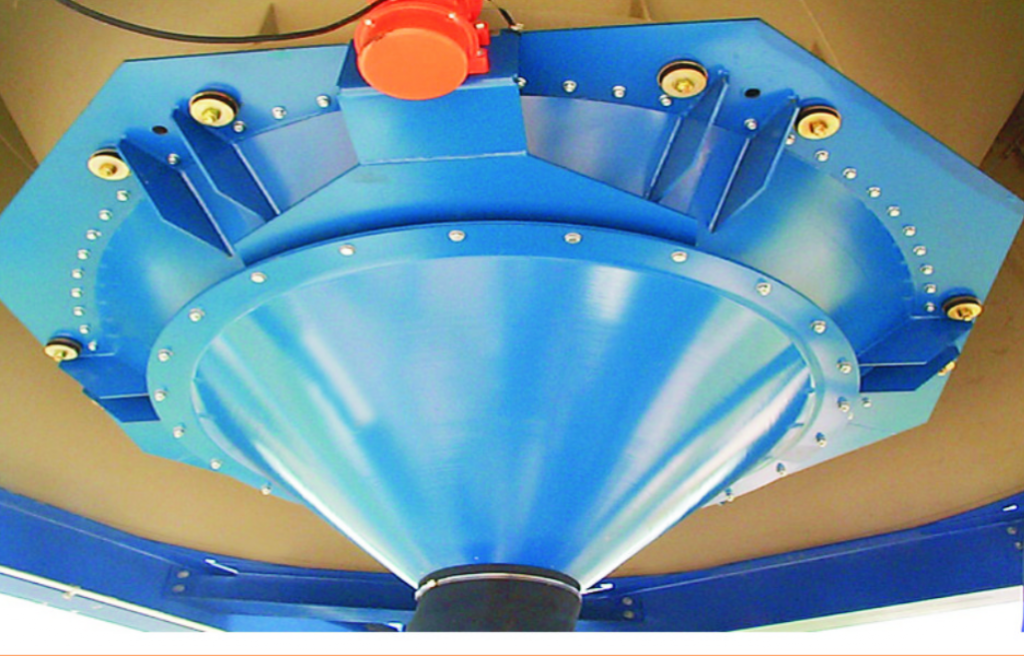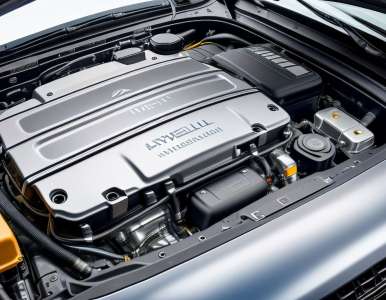A bin activator is a device that attaches to the bottom of a silo or hopper and creates vibrations to fluidize the material and facilitate its flow. A bin activator can improve the flow of material by reducing the friction and cohesion between the particles, breaking down any potential arches or bridges, and promoting mass flow.
A bin activator can offer several advantages over other methods of material discharge, such as pneumatic hammers, air cannons, or fluidized pads. However, not all bin activators are the same, and choosing the right one for your application can make a big difference in your performance and efficiency. In this blog post, we will explain what to consider when choosing a bin activator, such as the material characteristics, the silo or hopper geometry, the environmental conditions, and the application requirements.
Material Characteristics
The first thing to consider when choosing a bin activator is the material characteristics, such as the density, particle size, shape, moisture content, flowability, abrasiveness, corrosiveness, etc. These factors can affect how the material behaves in the silo or hopper, and how it responds to the vibrations of the bin activator. For example, some materials may be more prone to bridging or arching than others, or some materials may require more or less vibration intensity or frequency to fluidize them.
Therefore, it is important to choose a bin activator that is compatible with your material characteristics, and that can be adjusted to suit your material needs. For example, some bin activators have different cone shapes, angles, sizes, materials, baffles, deflectors, etc. to accommodate different material behaviors and flow patterns. Some bin activators also have adjustable vibration motors that can change the vibration intensity and frequency according to the material properties and flow requirements.
Silo or Hopper Geometry
The second thing to consider when choosing a bin activator is the silo or hopper geometry, such as the diameter, height, shape, outlet size, etc. These factors can affect how the material is stored and discharged in the silo or hopper, and how it interacts with the bin activator. For example, some silos or hoppers may have more or less headroom, or more or less outlet area, than others, or some silos or hoppers may have different shapes, such as cylindrical, conical, rectangular, etc.
Therefore, it is important to choose a bin activator that is compatible with your silo or hopper geometry, and that can be customized to fit your silo or hopper configuration. For example, some bin activators have different inlet skirts, outlet connections, suspension systems, seals, etc. to adapt to different silo or hopper dimensions and shapes. Some bin activators also have different installation options, such as flange mounting, bolt mounting, weld mounting, etc. to suit different silo or hopper structures.
Environmental Conditions

The third thing to consider when choosing a bin activator is the environmental conditions, such as the temperature, humidity, pressure, dust, noise, etc. These factors can affect how the material and the bin activator perform and operate in the silo or hopper, and how they comply with the safety and quality standards. For example, some materials may be more sensitive to temperature or humidity changes than others, or some bin activators may generate more or less dust or noise than others, or some bin activators may require more or less protection from the elements than others.
Therefore, it is important to choose a bin activator that is compatible with your environmental conditions, and that can be modified to meet your environmental needs. For example, some bin activators have different materials, coatings, finishes, etc. to resist corrosion, abrasion, or contamination. Some bin activators also have different features, such as sensors, indicators, controllers, etc. to monitor and regulate the temperature, humidity, pressure, dust, noise, etc. Some bin activators also have different certifications, such as ATEX, CE, UL, etc. to comply with the safety and quality regulations.
Application Requirements
The fourth thing to consider when choosing a bin activator is the application requirements, such as the flow rate, flow control, flow direction, downstream equipment, etc. These factors can affect how the material is discharged and conveyed in the silo or hopper, and how it integrates with the rest of your production process. For example, some applications may require more or less flow rate than others, or some applications may require more or less flow control than others, or some applications may require different flow directions than others, or some applications may have different downstream equipment than others.
Therefore, it is important to choose a bin activator that is compatible with your application requirements, and that can be optimized to match your application needs. For example, some bin activators have different outlet sizes, valves, connections, etc. to adjust and regulate the flow rate and flow control. Some bin activators also have different flow patterns, such as radial, tangential, axial, etc. to change the flow direction. Some bin activators also have different compatibility options, such as screw conveyors, belt conveyors, pneumatic conveyors, etc. to connect with different downstream equipment.
Conclusion
Bin activators are effective and efficient devices that enable the smooth and reliable discharge of material from silos or hoppers. They have several advantages over other methods of material discharge, such as uniform and controlled flow, prevention of material degradation, segregation, and contamination, increase of storage capacity, and reduction of energy consumption and maintenance costs. However, not all bin activators are the same, and choosing the right one for your application can make a big difference in your performance and efficiency. In this blog post, we explained what to consider when choosing a bin activator, such as the material characteristics, the silo or hopper geometry, the environmental conditions, and the application requirements.






